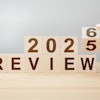
In a case that could open an inquiry into the scientific validity of bite mark evidence, two Illinois dentists are suing an expert odontologist for allegedly defaming them after he used a rape case they testified at as an example of how bite mark evidence can lead to wrongful convictions.
Russell Schneider, DDS, of Waukegan, and Carl Hagstrom, DDS, of Fox Lake, filed their lawsuit against Ventura, CA, dentist C. Michael Bowers, JD, DDS, in November 2011 in Cook County Circuit Court.
The lawsuit claims that Dr. Bowers used a case they worked on as proof that the forensic discipline is scientifically unreliable.
“Whatever reliability there is, it is far less reliable when done only from photographs.”
— Jed Stone, attorney
Dr. Bowers is a clinical professor at the University of Southern California Ostrow School of Dentistry in Los Angeles and has written several forensic dentistry books, including Forensic Dental Evidence: An Investigator's Handbook. He also co-authored Digital Analysis of Bite Mark Evidence. He has been a dentist for 36 years and is certified by the American Board of Forensic Odontology and as a crime scene analyst. He also serves as a deputy medical examiner for the Ventura County Medical Examiner's Office.
In February 2011, Dr. Bowers, who lectures frequently, gave a presentation titled, "A Perfect Storm: Is There a New Paradigm to Keep Bitemarks Afloat or Will They Sink?" at the annual meeting of the American Academy of Forensic Science. According to the lawsuit, he included in that talk a case that Drs. Schneider and Hagstrom had worked on in a list of 10 wrongful convictions caused by bite mark evidence. They allege that this action subjected them to ridicule and a loss of business.
Case overturned
The case Dr. Bowers referenced involved Bennie Starks, who was convicted in 1986 of beating and raping a 68-year-old woman. Drs. Schneider and Hagstrom examined evidence for prosecutors in the case and testified at trial that Stark's teeth matched a bite mark on the woman's shoulder.
Starks was sentenced to 60 years in prison but always maintained his innocence. In 2006, after serving nearly 20 years, an Illinois appeals court granted Starks a new trial after DNA tests excluded him as the source of semen on the victim's underwear.
The appellate court did not rule on the bite mark evidence. But subsequent forensic analysis of Drs. Schneider and Hagstrom's opinions by Dr. Bowers and other odontologists concluded that their work was flawed, according to Jed Stone, Starks' attorney. Specifically, they found that Drs. Schneider and Hagstrom reversed the upper and lower molds of Starks' teeth, confusing one for the other, in their examination.
Drs. Schneider and Hagstrom did not respond to requests by DrBicuspid.com for comment; Dr. Bowers declined to comment.
Bite mark analysis criticized
Bite mark testimony has been criticized by some courts for its lack of a scientific foundation, essentially leaving dentists to compare by visual examination bite marks on a victim's skin with x-rays or molds of a suspect's teeth to determine if they match.
 Picture of victim's bite marks, submitted as evidence in the Bennie Starks case. The discrete areas of bruising and abrasion show patterned injuries produced by human teeth. Image courtesy of Drs. David Senn and Iain Pretty.
Picture of victim's bite marks, submitted as evidence in the Bennie Starks case. The discrete areas of bruising and abrasion show patterned injuries produced by human teeth. Image courtesy of Drs. David Senn and Iain Pretty.
"Drs. Hagstrom and Schneider incorrectly identified photographs of alleged bite marks on the victim as coming from Mr. Starks," Stone told DrBicuspid.com. "We now know two things. One, they were wrong. And two, their bite mark opinion, introduced by the prosecution at Mr. Starks' trial, contributed to his wrongful conviction."
A Congressional hearing in 2009 focused on the findings of a National Academy of Sciences report on the scientific basis of forensic disciplines. Among the pattern evidence fields reviewed in the report, bite mark analysis received critical commentary. During the hearing, legislators heard from another man who, like Sparks, was wrongfully convicted on bite mark evidence and later exonerated through DNA analysis.
In addition, a 2009 study published in the Journal of Forensic Sciences (July 2009, Vol. 54:4, pp. 909-914) challenged the commonly held belief that every bite mark can be perpetrator identified. The results indicated that when dental alignments were similar, distinguishing which set of teeth made the bites was difficult. The researchers cautioned that bite marks should be very carefully evaluated in criminal investigations in which perpetrator identity is the focus of a case.
The study's lead author, Raymond Miller, DDS, a clinical associate professor of oral diagnostic sciences at the University at Buffalo's Laboratory for Forensic Odontology Research in the School of Dental Medicine, noted that numerous cases have been overturned through erroneous interpretation of bite marks. Dr. Miller warned of the dire consequences caused by such misidentification for the accused, the victim, and the justice system.
"We know that forensic odontologists are excellent at identifying human remains from dental records," Stone said. "We know that the science is far less reliable when dentists attempt to identify bite marks on elastic skin surfaces. And we know that whatever reliability there is, it is far less reliable still when done only from photographs."
The current suit claims that Dr. Bowers' presentation constitutes "false publications" because the reversal of Starks' conviction was not due to faulty bite mark testimony. It claims that Dr. Bowers imputed that Drs. Schneider and Hagstrom "lack ability and integrity" as forensic odontologists.
The alleged defamation harmed the professional reputations of Drs. Schneider and Hagstrom, the complaint contends. They have not been retained to provide bite mark testimony in any cases since then, and the number of patients that have been referred to them for treatment and evaluation has decreased, according to the lawsuit.
In a defamation suit, the plaintiff must prove that the alleged defamatory statements are false. If it goes to trial, the case could open an inquiry into the scientific validity of bite mark evidence.
The suit seeks compensatory damages as well as legal costs.
Prosecutors still have not decided whether to retry Starks.















